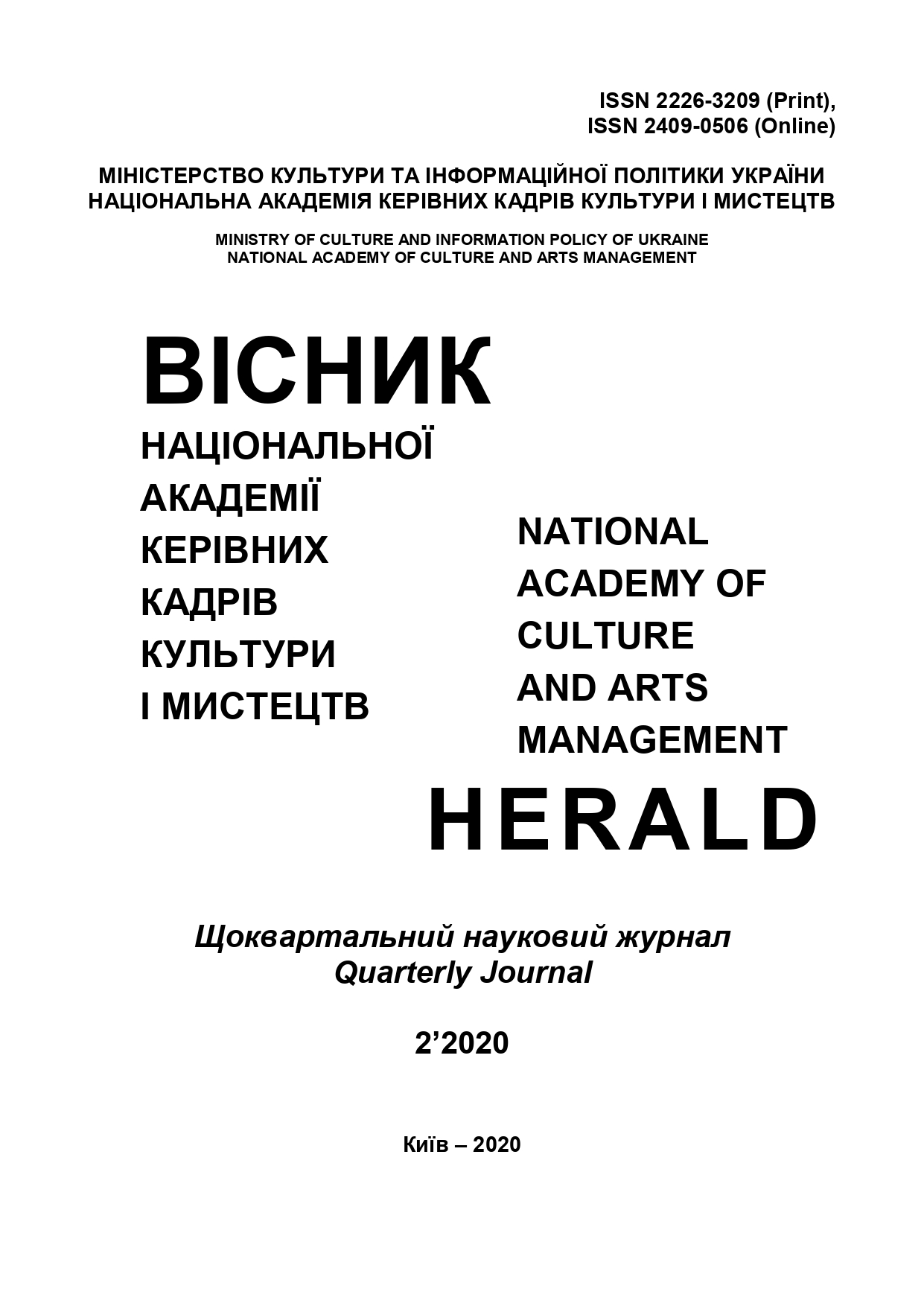Гротеск у режисурі Є. Вахтангова, О. Грановського, Леся Курбаса, Вс. Мейєрхольда
Grotesque in the direction of E. Vakhtangov, A. Granovsky, Les Kurbas, Vs. Meyerhold
Author(s): Tatiana Boiko, Marina TatarenkoSubject(s): Theatre, Dance, Performing Arts, Interwar Period (1920 - 1939), Sociology of Art, History of Art
Published by: Національна академія керівних кадрів культури і мистецтв
Keywords: stage grotesque; directing; metaphor; actor; theater;
Summary/Abstract: The purpose of the article is to highlight the formative principles of the grotesque in the practice of innovative directors E. Vakhtangov, A. Granovsky, Les Kurbas, Vs. Meyerhold. The methodology of the study is based on analytical, historical, comparative, and comparative typological methods. These methods were useful in understanding the specifics of stage grotesque, the analysis of socio-political processes of the first third of the twentieth century, and to identify the key trends in the directing and acting of the 1920-1930s. The scientific novelty is determined by the fact that the grotesque is the basic tool of figurative theatrical language, and its fundamental principles of contrast and struggle of opposites allow us to find new metaphorical meanings in the stage work in accordance with the demands of time. As a result, the authors of the article note that the grotesque stylistics in the 1920s-1930s, which is inherent in the work of the leading directors of the USSR and Europe, caused a certain tendency to search for the actual grotesque “key”, such as the example with artists N. Altman and G. Gross, influenced the formation of many actors' performing style. Conclusions. In the creative work of directors E. Vakhtangov, A. Granovsky, Les Kurbas, Vs. Meyerhold's grotesque stylistics emphasized the author's vision of both the post-revolutionary reality and the overall picture of the world. In addition, the grotesque as a principle of constructing stage imagery was an indicator of their aesthetic, artistic, and formative pursuits. With the help of stage grotesque it was possible to bring actual social problems to the point of absurdity, that is, to either dilute the atmosphere around this or that phenomenon or vice versa – to exacerbate it to the limit. In this way, the theater was able to diagnose the “diseases” of society and perform prognostic functions.
Journal: Вісник Національної академії керівних кадрів культури і мистецтв
- Issue Year: 2020
- Issue No: 2
- Page Range: 268-274
- Page Count: 7
- Language: Ukrainian

